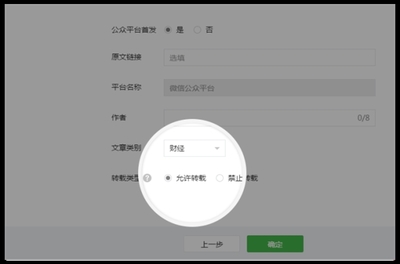REVIEW: HiFi ET MA8 DAP
Notlong ago, I covered an obscure DAP out of China calledtheHiFi ET MA9. Asyou can read in that review - and I highly recommend you do beforeproceeding - I found that device to sound exceptional, despite afew minor quirks of the user interface. At around $860 the MA9 iscertainly not cheap, but worthy of serious consideration for thoselooking to own a reference caliber DAP. The sound is just thatgood.
As a small company, I'm sure the maker realizes that not manypeople can afford to lay out the better part of a thousand dollarson a portable device. Also, there is some tough competition in thatarea, like the iBasso DX100 for example. The company seems to havetaken this to heart and has launched a new player calledtheMA8. At $500, it's stillexpensive, but significantly less so than its big brother, makingit potentially attainable to a wider audience. The first differencebetween the two is the enclosure being changed to a copper-likehue, which kind of looks pink in pictures but in reality ismetallic brownish/orange, and rather interesting to look at. TheMA9 was available in dark green or black, so the two are not likelyto be confused for one another.A quick note - Rockbox support has been added for the MA9, whichwould make it an absolute beast of a player. As my review of thatdevice indicates, the UI a bit simple and somewhat holds back thepowerful hardware. Rockbox makes that complaint irrelevant. But Ihaven't been able to load it - apparently Windows XP or Vista arerequired, and all I have isWindows7or OSX. Iassume the Rockbox support will quickly branch out to the MA8 as itmostly uses the same engine. I'm still working on finding someonewho runs XP or Vista to flash my MA9 for me, so I'm in norush.Woodpresentation box, black this time (the MA9 was rosewood), mostlythe same accessories
DESIGNThe MA8 starts with the same platform as the MA9. That means thesame all metal enclosure, same display, same processor and UI.There are some improvements in the UI though - the VU meter is farsuperior this time around, refreshing quickly which makes it dancewith fluidity rather than jumping along at just a few frames persecond as the MA9 did. There's also a choice of digital filteroptions for the DAC, which make small but worthwhile changes to thesound.Inside, the same modular design continues, but with different cardsinstalled for DAC and amp sections. The original DAC board wasrather ambitious for a DAP, and used a pair ofclassicPCM1704R2Rchips. The MA8 shifts focus to a more modern design based aroundthe PCM1792, the current top DAC chip fromTexasInstruments. It keeps the PCM2707 USB input which allows it tofunction as aUSBDACwhenconnected to a computer.The amplifier board is also different. The MA9 used a more complexstructure, with each channel getting an OPA627 withdualBUF634output buffers. TheMA8 goes simpler by using a pairofAD797opamps (one per channel)with an AD8397 as a buffer. It still has roughly the same outputlevels as the MA9.The dual battery design remains, meaning no rail splitter or DC-DCconversion required. One battery supplies the positive rail, theother supplies the negative, and you're all set. Battery life isfairly good for a device of this caliber and in fact seems somewhatimproved over the MA9, by a small amount. I'm not sure why thatwould be.Like the MA9, this unit has analog volume control as well asdigital. The analog volume wheel, deeply sunken in to the chassisto avoid accidental cranking, is used for headphone listening only,with the digital control set to max. For line out, which has adedicated jack on the side (confusingly placed underneath thevolume knob, which doesn't interact with it), the user may want totrim volume digitally as needed, so digital control comes in handy.There is still no digital output on board, and the device is stilllimited to 16-bit/48kHz or less due to theprocessor.
![[转载]来自Head-Fi的MA8评测 fiil耳机评测](http://img.aihuau.com/images/01111101/01063947t01b1f3531cac57a690.jpg)
LISTENINGJumping right in, the MA8 sounds very different than the MA9. Goneis the ultra smooth, natural presentation, replaced by somethingmore energetic and "high resolution". I'm not sure if I mean thatin a derogatory way or not - but it's definitely different. MA9 waswarm, and had exceptional bass, inviting mids, and smooth highs.MA8 could possibly be described as more neutral, but I'd also throwin the description "lit up" and "highly detailed". It's definitelya more modern sound that some people would prefer and others wouldnot.Interestingly, I'm not sure there really are more details to be hadhere. It's just the focus of the presentation that differs. I hearthe same amount of plucking and fiddling from artists like CrookedStill and Abigail Washburn, but with the MA8 I'm really drawn tothe leading edges which makes the detail more obvious. Same forhorns, and actually most instruments now that I think about it. MA9is more laid back with a macro-scale presentation, putting focus onthe entire track rather than the individual components. But if Ifocus I can still hear just as much "stuff" happening here andthere. In fact it seems more richly layered, like real music beingplayed in the real world. The MA8 throws it in your face so it'smore readily noticeable, and some people will clearly prefer thatpresentation. Personally I like the MA9 approach more.The MA8 does sound good on a strictly technical level. It's gotdeep bass, great extension on the top end, and sounds mostly clearin the mids as well. The output impedance is low enough not tointeract with even the most challenging multi-armature IEM, and theoutput is strong enough to drive most anything you'd want to lugwith you (and even some decidedly non-portable cans as well). Mychief complain is that the MA8 sounds somewhat bright andartificial at times. It does fine with reasonablysmoothheadphonessuchas VMODA M80 or 1964 Ears V3 (the latter being a particularly goodmatch). But if I use something brighter such as the Cosmic EarsBA4, orAudio TechnicaW1000X, oreven a JH13FP, things don't go as well. Low volumes are decent butas it climbs, grain and harshness start to show. I counteract thisby using smooth and even potentially darkerheadphones-Heir Audio 8.A, Westone ES5, LCD-2. The MA8 drivesplanarheadphonesreasonably well- you probably wouldn't want this asyouronlysource for LCD-2or HE500, but in a pinch it sounds decentenough.HD650is a better match -I actually enjoyed it very much, and the top end was far lessbothersome than with the HD800. Notice anything about this trend?My preferences for the MA9 went in the exact opposite direction,where neutral to bright options sounded best. Here the tables haveturned.I ended up liking the MA9 over the MA8 for most music. Theexception is classical, where I felt the MA8 did a different butroughly equal job. MA9 was better at showing the layers and depthin large orchestral works, but the MA8 had more pinpoint focus onsolo piano and chamber music. I'd choose the player based onwhichheadphonesI was using, andin many cases I'd probably go MA8 over MA9. With other stuff likeclassic rock, metal, or various pop music, the MA9 suites my tastebetter than its little brother, at least most of thetime.At one point I had something of a good idea - what if it's the ampsection letting down the DAC performance? I decided to stick withthe line-out for a while, to see what I could figure out. And I'mglad I did - the line-out performance is quite good indeed, showingthe headphone section to be something of a bottleneck for the DAC.Using budget portable amps like the TCG T-Box ($99) didn't reallyimprove things - it merely shifted the issues to other areas. Butsomething reasonably nice would show a definite improvement overthe built in amp section. The Shonyun 306 ($180) for example, isnot the best portable amp in the world, but it sounded far morelistenable to my ears. I found it similarly clear and stillslightly bright, but not annoyingly so. And it had more drive towork with difficult bigger cans. The Leckerton UHA-6S mkII ($279)sounded really good too - it showed off the grace of the DACsection which ends up being really quite nice overall. It's got asense of fluidity that gets somewhat lost through the integratedamp, or maybe buried is the better word.The line-out sound is good enough to where it isn't just forportable use. I paired it with a few desktop amps such astheNuForceHAP-100andFirestone Bobby, and it was always enjoyable to hear. I'd say as aplayer it is easily in line with entry levelCDplayersfrom NAD or the like. In fact I'd thinkone would need to pay $300+ for a new disc-based player that soundsthis good, maybe as high as $400. I compared it directly to anoldDenonDVD-2200 universal player which sold forroughly $600 a while back, and the MA8 was definitely the superiorperformer. It had more detail but was also more musically engaging,making theDenonsounda bit dull and veiled in comparison. The PCM1792is a fantastic DAC chip to work with, and the design here seemswell thought out - it's a shame the amp section lets it down tosome degree. Fortunately the MA8 uses the same modular design asthe MA9, meaning a different amp card could be swapped in rathereasily. I have not yet had a chance to try the card from my MA9 butthat would potentially make for a killer combo.As I mentioned, one of the few menu differences from the MA9 is theability to choose a digital filter. The digital filter is built into the DAC chip itself, unlike the MA9 which uses the DF1704dedicated external filter. We get the choice of "Sharp" or "Slow"which doesn't drastically change the sound but does impart asubtlety which makes it worth messing with. The Sharp filter isclear and detailed, with nice extension and air. It's a bit narrowsounding though, like a more direct presentation. The Slow filteris more open and has believable depth to it, but changes the highsto make them a touch less airy. Which is odd because a lot of timesthe more air, the better the soundstage. But not this time. Anyway,I ended up preferring the filter set to Slow and left it that waywhether using the headphone jack or the line out. But it's nice tohave options.Just like the MA9, the MA8 offersUSBDACcapability.Plug it in to PC (or probably a Mac but I didn't try) and itswitches to USB mode, allowing playback through its line-out orheadphone jack. I revisited USB and found that I actually enjoy itmuch more this time around as compared to the MA9. In that device,playing via USB made everything blurry and fuzzy. The PCM1792 musthave far better jitter rejection thanthePCM1704,because this time I can't tell a difference between USB andinternal memory playback. I still don't know that this is the mostuseful feature in the world, but since the device already has a USBport for data then it might as well have this added feature too.Why not?CONCLUSIONHiFi ET will never be a massive company. Their competition - HM801and AK100 and DX100 and the like - is far more well known amongheadphone enthusiasts. And that's fine... just because othershaven't heard of it, doesn't mean it can't deliver a richexperience. That's what HiFi ET aims for and on many accounts, it'swhat they achieve.With the MA8, they aim to be more inclusive for people who can'tafford a nearly $1K device. I am slightly disappointed by theamplifier section in the MA8, yet impressed by the rest of thedevice. As a player connected to external amplification, the MA8 isanother story altogether - clear, extended, and mostly transparent,it represents a more modern Hi-Fi sound than the MA9, withoutoverdoing it. If the company can tweak the amp section to bettercapture the character of the DAC without being too harsh, I thinkthe MA8 would be a viable option for both home and portable use. Asit stands, I have some reservations about giving it a clearrecommendation. It's definitely one to watchthough.
原文链接http://www.head-fi.org/t/672419/review-hifi-et-ma8-dap
 爱华网
爱华网



